Gill MaxiMet Weather Station X-Series Integration Guide (SDI-12)
Real-Time Weather Measurements
The Gill MaxiMet GMX-Series Weather Stations measure a host of atmospheric and environmental parameters. The sensors are compatible with NexSens X-Series data loggers via the SDI-12 communication protocol and sensor interface. A user-generated or pre-defined script on NexSens X-Series data loggers can detect, log, and transmit all parameters output by the weather station. Parameter data is transmitted, in real-time, at a user-specified interval (e.g., 10 minutes) to the NexSens WQData LIVE Web Datacenter. There, data is stored on customizable dashboards with statistics and graphical interfaces for each parameter. Users can download and send data reports via Email, FTP, or an API. Below is information on the settings and wiring required to integrate these sensors with a NexSens X-Series data logger.

Figure 1: MaxiMet GMX600 Weather Station integration with NexSens X-Series data loggers.
Compatible Models
The Gill MaxiMet weather stations measure temperature, humidity, barometric pressure, wind, and precipitation parameters outlined by international standards. All Gill MaxiMet models below are compatible via the SDI-12 communication protocol and sensor interface.
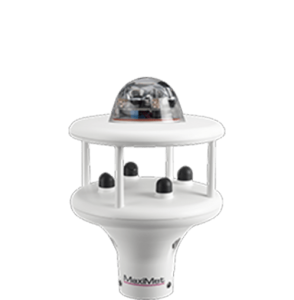 Figure 2: Gill MaxiMet GMX 200 & GMX240 Weather Station.
| 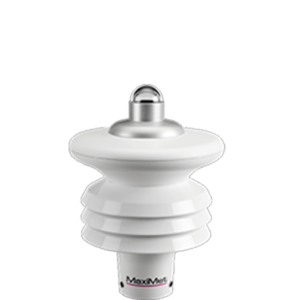 Figure 3: Gill MaxiMet GMX300 and GMX301 Weather Station.
| 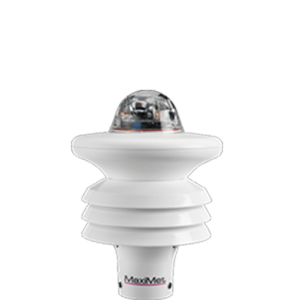 Figure 4: Gill MaxiMet GMX400 Weather Station.
|
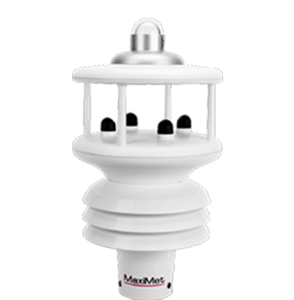 Figure 5: Gill MaxiMet GMX500 and GMX501 Weather Station. | 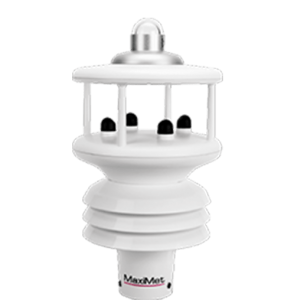 Figure 6: Gill MaxiMet GMX550 and GMX551 Weather Station. | 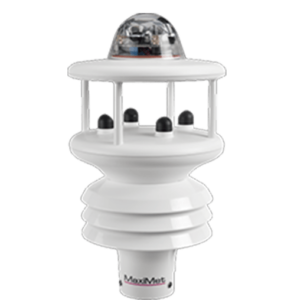 Figure 7: Gill MaxiMet GMX600 Weather Station. |
Gill GMX-Series Integration
The sensor communication protocol must be adjusted in the MetSet software to output in SDI-12. The user can also enhance the sensor’s accuracy at the final deployment location by changing other settings (e.g., setting averaging intervals, adjusting compass declination, setting the height above sea level etc.).
1. Configure Communication
- Download the MetSet software from the Gill Instruments website and connect to the weather station using a USB configuration cable.
- Open the MetSet software and click Connect and Read.
- The software will begin searching through all available COM ports for a connection to the weather station.
- Once connected, a summary of the device settings should appear in a separate window. Close this window to begin adjusting the internal settings.
- Change the protocol and interface in the COMMS settings to SDI12.
2. Change Parameter Output and Internal Settings
- Since atmospheric pressure varies with height above sea level, the altitude at the final deployment location must be set. The sensor will make a correction based on the set altitude to adjust the reading as if the station were at sea level.
- The example below shows a sensor that is 259 meters above sea level (elevation at ground level), while mounted 3 meters above the ground.
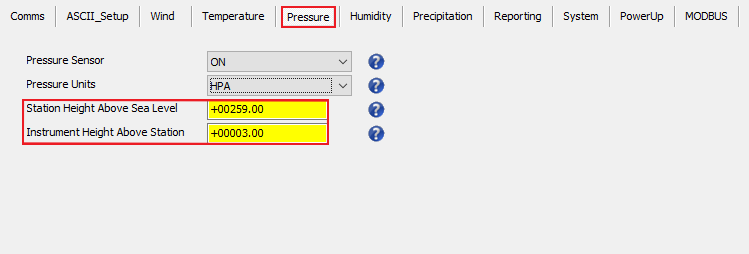
Figure 5: Station height set within pressure settings.
- If the coordinates for the final deployment location are known, it is best to set the magnetic declination within the Wind tab to correct for the Earth’s magnetic field offset from true North.
- A declination of +9.2° is set in the example below. A positive value indicates that magnetic North is East of true North, and a negative value indicates a magnetic North that is West of true North.
- Magnetic declination can be calculated using the NOAA Geomagnetic Declination Calculator.
- A declination of +9.2° is set in the example below. A positive value indicates that magnetic North is East of true North, and a negative value indicates a magnetic North that is West of true North.
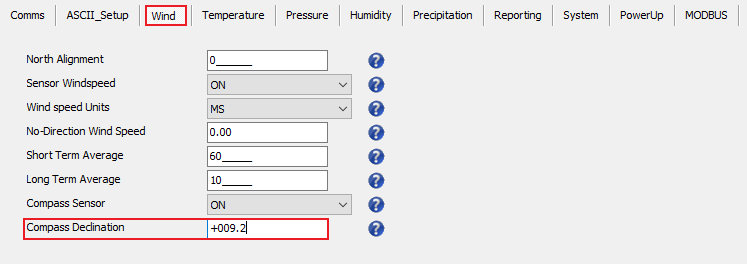
Figure 6: Magnetic declination setting for wind direction parameter.
- Other adjustments may be made following the Gill sensor manual. After completing all necessary changes, click Save Settings To Device and wait for the weather station to update the internal settings successfully.
- The weather station is now ready for detection on an X-Series data logger.
3. Automatic Sensor Detection
The user must create a Generic SDI-12 script through the NexSens CONNECT software to communicate and gather measurements from the GMX-Series sensor. For proper configuration, the user must reference the sensor’s SDI-12 address (default=0) and parameter output.
SDI-12 Script Generation
All MaxiMet models have the same SDI-12 parameter output; however, the model type and internal sensors will determine which parameters output actual values. Measurements that are not collected will output as +999.99. These values should be replaced in the SDI-12 script with “_none.” To determine which values are output, it is best to send measurement commands directly to the sensor using the CONNECT SDI-12 Tool, outlined in the link below:
- Communicate Directly with an SDI-12 Sensor
- Send the ‘C’ command to begin gathering readings. Wait for the warmup time outlined in the response.
- Use the D commands to begin gathering readings. Depending on the firmware version, GMX-Series sensors will output data from D0 to the D5 or D6 data request commands.
- Below firmware 2.00.24: The sensor will output 50 total parameters and end at the D5 data request command.
- Above firmware 2.00.24: The sensor will output 53 total parameters and end at the D6 data request command.
C Command SDI-12 Responses
| Parameter | Default Unit | D Command | Notes |
| Relative wind direction | Deg | 0 | |
| Relative wind speed | m/s | 0 | |
| Corrected wind direction | Deg | 0 | |
| Corrected wind speed | m/s | 0 | |
| Temperature | C | 0 | |
| Relative humidity | % | 0 | |
| Barometric Pressure | hPa | 0 | |
| Precipitation Intensity | mm/h | 0 | |
| Solar Radiation | W/m2 | 0 | |
| X-tilt | Deg | 1 | |
| Y-tilt | Deg | 1 | |
| Z Orientation | — | 1 | +1 Upright, -1 Inverted |
| An1 | — | 1 | |
| An2 | — | 1 | |
| Dig1 | — | 1 | |
| Volt | V | 1 | |
| Year | YYYY | 2 | |
| Month | MM | 2 | |
| Day | DD | 2 | |
| Hour | HH | 2 | |
| Minute | mm | 2 | |
| Second | ss | 2 | |
| Latitude (integer)* | Deg | 2 | positive values are N, negative are S |
| Latitude (fraction)* | Deg | 2 | positive values are N, negative are S |
| Longitude (integer)* | Deg | 2 | positive values are E, negative are W |
| Longitude (fraction)* | Deg | 2 | positive values are E, negative are W |
| Height above sea level | m | 2 | |
| WMO Average Wind Direction | Deg | 3 | |
| WMO Average Wind Speed | n/s | 3 | |
| WMO Relative Gust Direction | Deg | 3 | |
| WMO Relative Gust Speed | m/s | 3 | |
| WMO Average Wind Speed Units | — | 3 | |
| WMO Relative Gust Wind Speed Units | — | 3 | |
| Units | — | 3 | 1=ms, 2=kph, 3=mph, 4=knots, 5=fpm |
| Wind Chill | C | 4 | |
| Head Index | C | 4 | |
| Air Density | kg/m3 | 4 | |
| Wet Bulb Temperature | C | 4 | |
| Dew Point | C | 4 | |
| Precipitation Total | mm | 4 | |
| Solar Hours | hh | 4 | |
| Sunrise | Hours:Minutes (h:min) | 5 | |
| Solar Noon | Hours:Minutes (h:min) | 5 | |
| Sunset | Hours:Minutes (h:min) | 5 | |
| Sun position azimuth | — | 5 | |
| Son position elevation | — | 5 | |
| Twilight civil | — | 5 | |
| Twilight nautical | — | 5 | |
| Twilight astronomical | — | 5 | |
| Compass Heading** | Deg | 6 | |
| Pitch** | Deg | 6 | |
| Roll** | Deg | 6 | |
| Status** | — | 6 |
*Ensure to download the latest version of CONNECT before creating an SDI-12 script. CONNECT software versions of 3.24.01.003 or higher will combine the integer and fractional portions of the latitude and longitude parameters into single latitude and longitude parameters.
**For firmware versions below 2.00.24, heading, pitch, and roll are unavailable. The Status parameter will be the last parameter of the D5 data request command.
Once the parameter output is confirmed and tested, follow the link below to create the Generic SDI-12 script.
- Create a Generic SDI-12 Script in CONNECT
- Ensure to download the latest version of CONNECT before creating an SDI-12 script. CONNECT software versions of 3.24.01.003 or higher will combine the integer and fractional portions of the latitude and longitude parameters into single latitude and longitude parameters.
- The Gill Instruments manufacturer and most Gill models are available for selection. Parameters will automatically populate the Selected parameters list; however, all parameters must be entered. Select the Show All option next to Available parameters.
- The measurement command should always be ‘C,’ allowing measurements to be obtained concurrently with other SDI-12 sensors connected to the logger.
- Continuous power should always be used for the GMX-Series weather stations. The warmup time is arbitrary when using continuous power; however, 5 seconds is recommended.
Run the Sensor Detection
Once the script is created, transfer and enable it on the data logger.
After the script is enabled, run a sensor detection to program the sensor onto the logger.
Read Sensor Configuration – Confirm Sensor Detection
After ~5-10 minutes, read the sensor configuration to confirm the weather station and other sensors have been detected on the data logger. Thoroughly review the parameter list to ensure all parameters are accounted for and are measured in the desired units. Let the unit gather a few readings to confirm accurate and reasonable parameter data.
4. Setting up WQData LIVE
Once an X-Series data logger has finished a new sensor detection, it will automatically push the sensor configuration to the WQData LIVE web data center. Follow the three articles below to create a WQData LIVE account and a project/site. Then add the data logger to the project using the included claim code.
- Create a WQData LIVE Account
- Create a Project on WQData LIVE
- Add a Data Logger to a Project on WQData LIVE
Real-Time System Application
Real-time weather and atmospheric measurements from the Gill GMX-Series Weather Stations are useful in various environmental monitoring applications.
Applicable Systems
Discover applicable uses for the Gill GMX-Series Weather Stations.
- Dock Monitoring Systems
- Green Roof Monitoring Systems
- Inland Lake Monitoring Systems
- Large Lake Monitoring Systems
- Weather Station Systems
Weather and Atmospheric Measurements
Learn more about weather and atmospheric measurements on the NexSens Blog Page.
